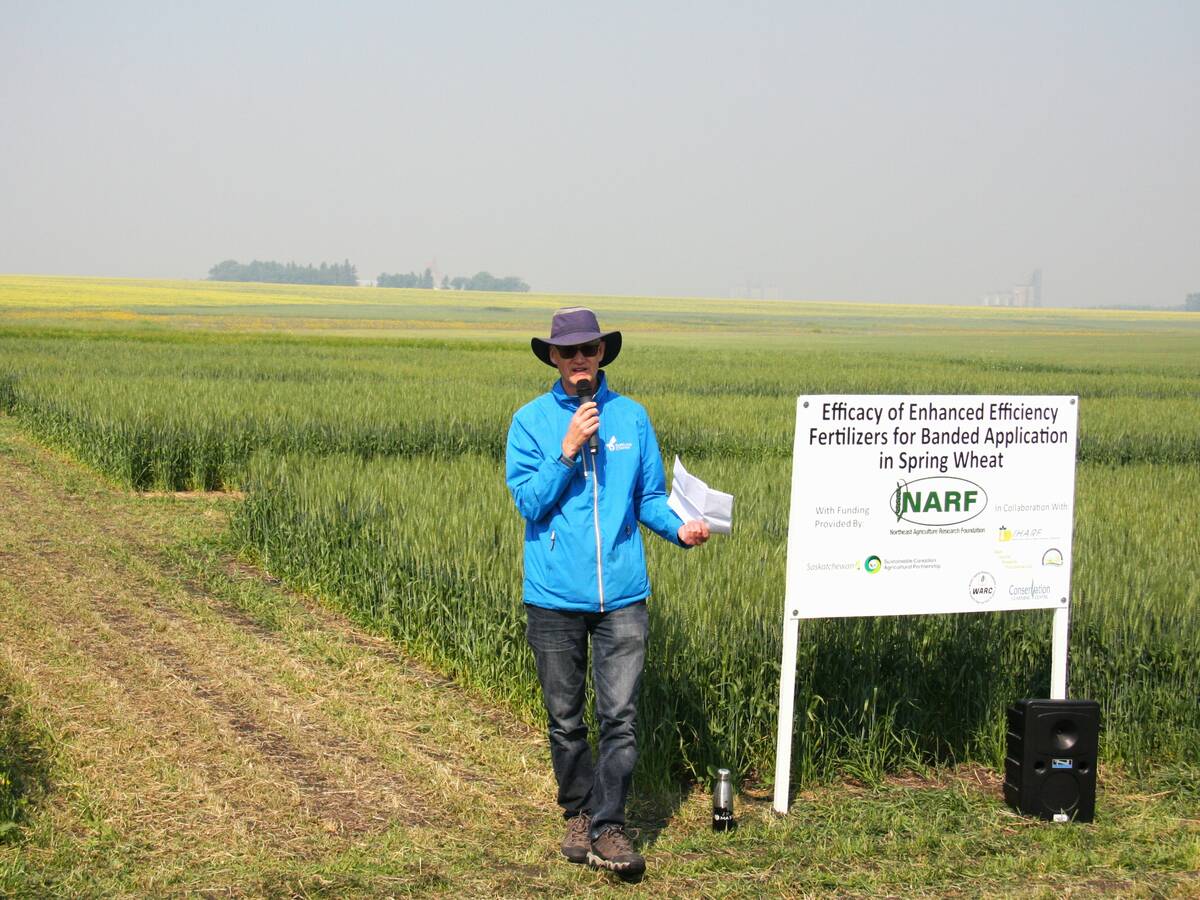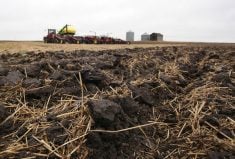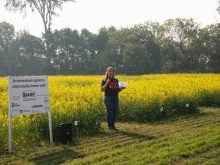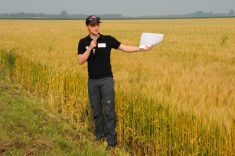Greenhouse gas emissions have received a lot of attention from researchers in the agriculture sector as they consider ways to reduce their levels.
However, a research co-ordinator with the East Central Research Foundation (ECRF) in Yorkton, Sask., says some of them aren’t considering how the loss of nitrogen into the atmosphere correlates with fertilizer application or if there is an impact to yield.
Mike Hall has been looking into emission reduction, as well as nitrogen losses and crop impact in wheat. His project’s objective is to consider side-band applications where a product with a nitrification inhibitor is used, such as an enhanced efficiency nitrogen product.
Read Also
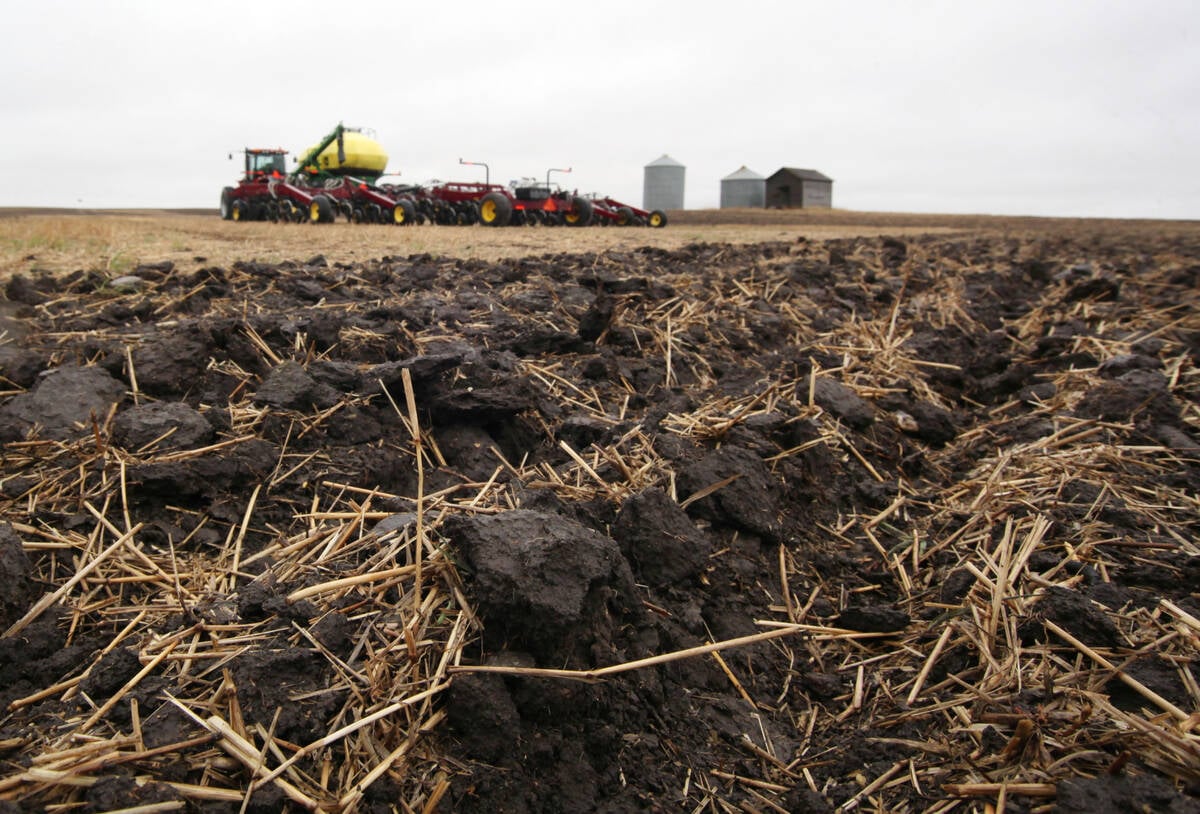
Precision 4R cuts farm greenhouse gas emissions
Lower areas in your field tend to emit more greenhouse gas, research shows that precision 4R nutrient stewardship practices can help mute the trend
“So eNtrench is the product that we’re using, or dual urease and nitrification inhibitor, SuperU,” he said at the Northeast Agriculture Research Foundation’s (NARF) field day earlier this summer.
“And so we’re looking at side band applications to see if we can prevent any losses of nitrogen that can be picked up in terms of either yield or grain protein.”
For the study, the researchers are comparing rates of 80, 120, and 160 pounds of nitrogen per acre. Hall says they’re trying to find the “sweet spot” that prevents nitrogen losses while having a positive impact on yield or protein.
The study is in its second year and is taking place at five sites across Saskatchewan, including ECRF, NARF in Melfort and research farms in Prince Albert, Scott, and Indian Head.
At the NARF site, researchers seeded CDC Wheatland on May 16 and have used the best management practices regarding herbicides and fungicides during the growing season.
When nitrogen is applied as urea, it can convert to ammonium, and if the soil’s pH is high, the ammonium can be converted into ammonia and gas off into the atmosphere and contribute to emissions.
“The other way we can lose nitrogen is that the ammonium converts to nitrate,” Hall said.
“And then that nitrate can be lost to denitrification when we get waterlogged soils. And basically the bacteria are using the nitrate as an oxygen source because they can’t breathe.”
In the form of nitrate, nitrogen moves within the soil and contributes to leaching. The use of enhanced efficiency nitrogen products are intended to stop this process and reduce these losses.
These kinds of products are important to slow the conversion of ammonium to nitrate, which in turn slows the release of nitrous oxide, a greenhouse gas.
Hall’s study applied SuperU to the crop via broadcast, shallow-band and deep-band.
His definition of deep is inserting the implement four inches into the soil and packed, and shallow is two inches when implement is inserted.
It was decided to compare applications after a trial from last year showed no differences of yield or protein when using SuperU, and a different trial that shallow-banded SuperU saw high ammonia losses compared to surface broadcasting.
This occurs because there isn’t enough moist soil on top of the urea and because the urea increases the soil pH around the band, causing ammonium to convert to ammonia.
With this year’s trial, there were detectable differences in grain protein but not yield.
“We lost grain protein when we were either broadcasting the urea on the surface or when we were shallow banding it,” Hall said.
“But when we when we used a product such as SuperU, we could reduce that loss in the shallow band and in the broadcast application. But when we were deep banding, conventionally … we didn’t see any benefit from using SuperU in that instance.”
The overall “moral of the story” is to avoid shallow-banding, but if shallow-banding or broadcasting is necessary, Hall recommends using an enhanced efficiency fertilizer to prevent nitrification and the loss of nitrogen.
“I’d like to see a lot more information done on this,” he said.
“Because if producers are being asked to use products like SuperU in a conventional system of side-banding, that’s a very expensive proposition. And there would have to be incentives in place to compensate for the cost of the product.”




